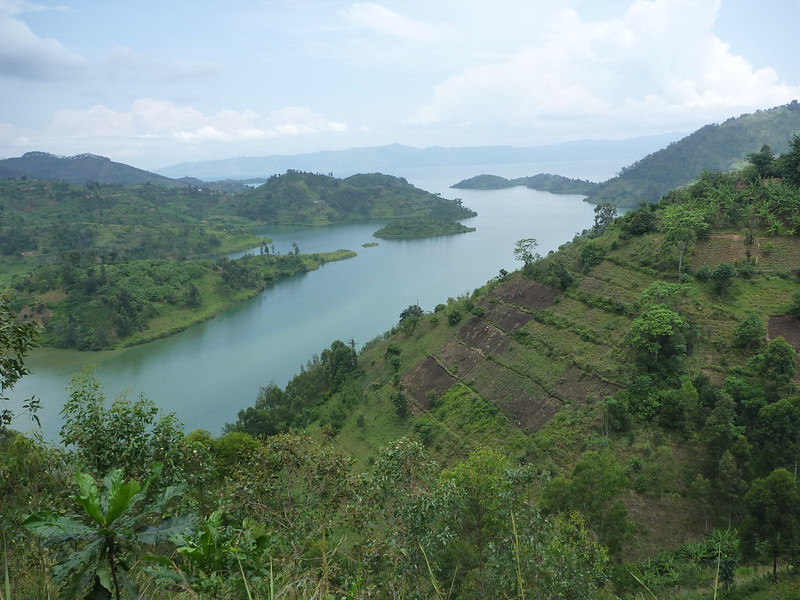Lake Kivu: facts and things to do
Lake Kivu is known for its beauty and clarity. Lake Kivu is a crater lake that runs along the boundary between Rwanda and the Democratic Republic of the Congo in East Africa’s Albertine Rift region. Since there are no crocodiles, hippos, or bilharzia (also known as schistosomiasis) in the lake, it is suitable for swimming and boating. Along the lake’s beaches, it is easy to travel from village to village and observe the people’s fishing way of life. Near the conclusion of your trip to Rwanda or the Congo with Gorilla trekking in Africa, a visit to the lake will be a well-earned opportunity to unwind.
Rwanda’s Lake Kivu With an area of 2700 square meters, the lake is the sixth largest in Africa and is located at a high elevation of 1460 meters (4790 feet) above sea level. Rwanda (42%) and the Democratic Republic of Congo (58%) share it nearly evenly. The plates of the rift itself are slowly separating, causing volcanic activity in the area. Although the lake is mostly free of harmful marine life, it is notorious for another sleeping monster that waits 200 meters below the surface: quantities of methane gas created by local bacteria and volcanic activity. Swimmers and marine animals close to the lake’s surface are not in danger from the gas. But a phenomenon known as “lake overturn,” which refers to the confined gases escaping into the air above the lake, worries scientists. Although scientists are unsure of what could cause Lake Kivu to overturn, they believe that the nearby Virunga volcanoes’ eruptions could be a contributing factor. The lake is currently surrounded by a population of over 2 million people in the small, vibrant towns of Rwanda and Congo, and it is frequently visited by tourists.

Although they also cultivate tea, coffee, cattle, and honey, the people who live around the lake mostly rely on fishing and subsistence farming for their livelihood. You may view and taste fresh coffee from bean to cup by visiting the coffee processing facilities at Kinunu and Cyimbili, if you’d like. On the islands and along the shore, people also brew beer. Mechanical engineers, chemical engineers, and other workers are employed in the hydroelectric production and industrial methane extraction from the lake. Lastly, the villages receive additional revenue from the tourism sector, which includes hotels, markets, stores, and eateries.
Beautiful circular hills surround the basin where the lake is located, providing sweeping views of the lake, its islands, and the surrounding mountains. Although the lakefront is rocky in some spots and sandy in others, one may always be amazed by how clear the lake floor is and observe the numerous fish that swim close to the surface. Take a dive off the pier into the cold, clear ocean or have a picnic close to the shoreline beneath palm trees that wave languidly. Take pleasure in sea kayaking close to Kibuye and navigate the calm seas to Peace Island, a peaceful area for contemplation and rest, or Bat Island, home to five million fruit bats. Friendly residents of the Nkomo and Bugarama Islands like chatting with guests and sharing details about their homes, families, and cultures. The neighboring marshes are also home to cormorants, kingfishers, and pelicans. Local specialties like akabenzi, a pig dish cooked with bananas, and sambaza, a little fried fish dressed with lime and eaten whole, are available at every restaurant.
There are three lakeside communities on the Rwandan side of the lake where one can stay. The farthest from Kigali, Cyangugu, has a magnificent old mosque and breathtaking vistas. You may party with the locals next to the broad sandy beaches of vibrant Gisenyi, or you can take in views of and easy access to Bat Island and Peace Island from the serene lake resorts of Kibuye. Before or after your Rwanda gorilla tour to Volcanoes National Park, families, honeymooners, or friends are known to find the lake to be a great spot to relax.
